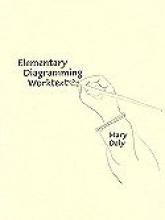Grammar Supplement
Eats, Shoots and Leaves
Elementary Diagramming Worktext
This is simple, clearly presented, and in a pleasing font; examples are profuse, and exercises numerous. It includes a complete answer key, on different colored paper, in the back of the book. Ours was just a shrink-wrapped set of 3-hole-punched pages which we put into a simple binder. No fancy bindings, but an excellent presentation. The eight chapters include The Sentence: Subject and Verb, Three Articles, Adjectives, Direct Objects, Linking Verbs, Adverbs, Prepositions, and A Peek Ahead. The introductory paragraph sums up the book succinctly: "Usually, we teach diagramming very gradually and even spread it over several years because there are so many details to learn. The trouble is, diagramming is a sort of language, though only a written language, and until you can use it for everyday thinking, you can't get used to it...Perhaps grammar could be taught a lot earlier and faster if it were made simple and visual." That is what the author has done...simply and visually.
Update:The second edition (2002) contains 71 pages plus a 38 page answer key. The binding is now a "perfect bound" softcover binding. The content is essentially the same.
Copyright 1998 / 2002
How Much Can a Bare Bear Bear?
Homonyms are words that sound and also look alike. But they have different meanings, as in "Can you pass that can, Mike?" Or "May I sail with you in May and coast along the coast?and
Now, some words sound identical but are spelled in different way. These words are known as homophones. Like praise and preys and prays. Though homophones have matching sounds, their meanings aren't the same. And there isn't any question, they're as fun as any game.The homonym and homophone pairs are highlighted in matching colors to make it easy to identify each set. On the whole, we found this book both entertaining and helpful.
The First Whole Book of Diagrams
I was not taught to diagram sentences as part of my education, so I first viewed such diagrams as a curiosity; however, I have gradually come to appreciate their value as a tool for helping my children understand how the works and ideas in a sentence are related. I have, for example, diagrammed Latin sentences for them to help them understand the structure and grammar of that language.
The First Whole Book of Diagrams is a sort of reader of diagrams, organized by complexity. The first seven chapters overlap with the Elementary Diagramming Worktext in covering basic diagramming, while the next eight present more complex topics such as coordinate conjunctions, auxiliary verbs, imperatives, interjections, direct address, subordinate clauses, verbals, intransitive verbs, and apposition. There follows a teacher's manual, and finally two chapters of complex diagrams of actual prose and verse selections.
We use the First Whole Book of Diagrams for examples, as a source of dictated sentences for diagramming, and as a reference, with the Elementary Diagramming Worktext as our basic text. However, the teacher's manual in the First Whole Book lays out a simple and clear method for teaching grammar through diagramming, independently of the elementary worktext. Mrs. Daly points out that it is vital to teach the right questions to ask in order to determine the function of words in a sentence, since rules like: "A noun is a person, place, or thing," fail with alarming regularity even in simple sentences. This is the approach she takes in the teacher's manual.
The First Whole Book of Diagrams is an extensive resource of diagrams, but it is also fun to read. My oldest two children have enjoyed reading many of the diagrams and puzzling them out. The diagrams are funny, fun, sometimes inspiring, always interesting.
The Complete Book of Diagrams is the public school version of the original diagramming book. It does not contain references to God, and is available from the Riggs Institute.
The World of Language Series
This series of six books introduces young children to concepts of grammar through very entertaining and sometimes humorous poetry and extremely colorful pictures. The titles are: Kites Sail High: A Book About Verbs, Behind the Mask: A Book About Prepositions,A Cache of Jewels and Other Collective Nouns, Merry-Go-Round: A Book About Nouns, Many Luscious Lollipops: A Book About Adjectives and Up, Up, and Away: A Book About Adverbs. Within the context of a fast-moving collection of widely-varying and very colorful illustrations, these poems explain, list and give examples of each of the parts of speech. For example, in the book Behind the Mask, you'll find the following sentences (emphasis is the same here as it is in the text) " Of PREPOSITIONS have no fear. They help to make directions clear. Along the northern shore bear east... beyond this green, reptilian beast... past its hungry, gaping mouth... veer directly... to the south, toward a place where mermaids flock upon, beside and near a rock." These particular sentences are spread out over six pages which include pictures of an antique-looking map illustrated with ships, a treasure chest, a Tritan, etc., a large pictures of a green serpent and a page full of mermaids. My children have really enjoyed these books and I have to admit that they are a decent refresher course for moms as well.
Unfortunately, almost every book has something (usually only one thing in each book) of a possibly-objectionable nature, such as: some scantily-clad mermaids and illustrations of witches (although appropriately portrayed as ugly and scary). The series is also recommended by Seton Home Study in their online reading resource lists.





